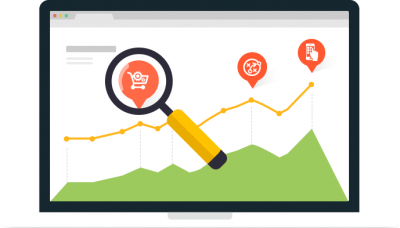Capture a strong place in the Internet marketing world through website SEO services that help you engage socially, dominate online search, and drive more business leads. We are helping businesses TO build a solid website that appears both on social media and search results.
Home » SEO Services »
The majority of companies know that in the online world there’s a huge potential to capture prospective clients. All you need is to have access to professional web SEO solutions that could seize the attention of users and help you outrank other competitors. Not just this, applying fruitful SEO techniques helps you carry your company or brand message across all of your marketing assets.
– 8 to 10 keywords
– Billed in advanced every months
– 8 Optimized Web pages
– Initial Review & Analysis
$199 Per Month
– 11 to 20 keywords
– Billed in advanced every months
– 15 Optimized Web pages
– Initial Review & Analysis
$299 Per Month
– 21 to 30 keywords
– Billed in advanced every months
– 30 Optimized Web pages
– Initial Review & Analysis
$399 Per Month
– 31 to 50 keywords
– Billed in advanced every months
– 40 Optimized Web pages
– Initial Review & Analysis
$599 Per Month
We carry out tried and tested methods that are completely legitimate in the presence of Google guidelines helping you to get consistently genuine leads. Here are the reasonable SEO packages that would give you an idea of what we offer:
Are you constantly facing such issues –
➩ Increased bounce rate
➩ No visibility in search results
➩ No genuine business leads
➩ Poorly optimized website pages
“There’s a saying in this online world, if your business is not listed on the internet then your business has no existence. This might sound a little wicked but once you get to know about the insights then you’ll clearly understand what we were trying to say. Today, with an increase in smart devices, there’s an increase in smart users. The searches and researches a lot about any product or services before availing them. Almost two third of internet users are likely to purchase. This shows the great opportunity that you can seize. Getting your website optimized will bring enormous benefits. If you know how to create SEO strategy, you are going in the direction of success. Because when you are online, your customers can come from anywhere and in a bulk order quantity. “


SEO is the most important activity for your website and online business growth. Every time new biggest SEO trends come to help online businesses improve their visibility. Hence, if you are looking forward to better online visibility and product sales you must take website SEO very seriously.
☞ 57% of marketers believe that among all marketing tactics, SEO works the best.
☞ 47% of customers prefer to view a few contents posted by the site before buying any product or service.
☞ 75% of your potential customers do not visit the second page of a search engine.
These facts clearly indicate that if your site will be properly optimized and ranks well in the search engines, you can have access to the number of benefits that eventually will grow your business.
BOOST WEBSITE RANK!
INCREASE CLICK THROUGH RATE!
DOUBLE PROFIT MARGINS!
Online visibility and ROI are two of the most important pillars for the success of an online business. They help you strengthen your business’s online presence and acquire potential customers in the market. Hence, if you are one of the many players in the online business market, you cannot simply neglect SEO. It forms the base of your foothold and success in the online biz world. Thus, partner with an SEO specialist who can perform effective off page SEO activities.
We do not provide you the with fake commitment that other companies do to bag up money out of your pockets. Our working methods include a complete understanding of the client’s assignments and matching the strategy with the vision. With us, you get to enjoy more visibility over search results inviting more people to find out about your website.
Just bring your business online and leave the rest to us.
With the changing trends, most businesses now understand that if they want to be
If you want your business to have a strong position in the market, having an eff
No matter what your business is all about, you can’t reach its potential if yo